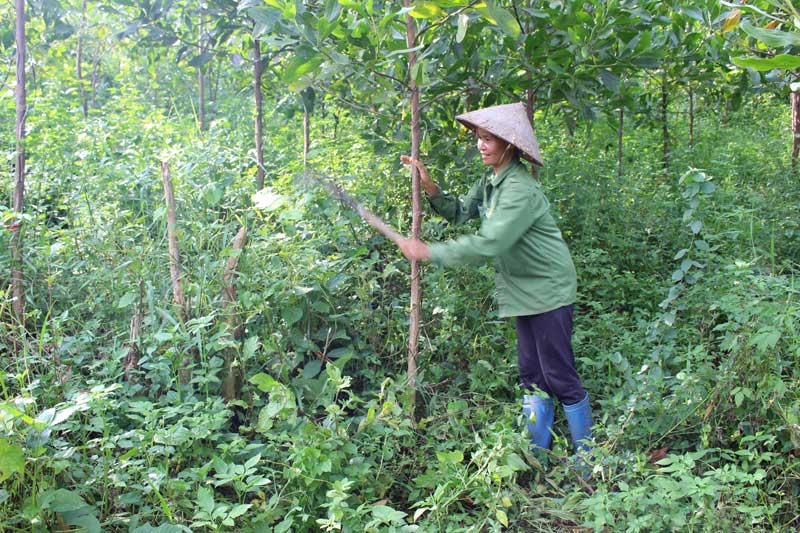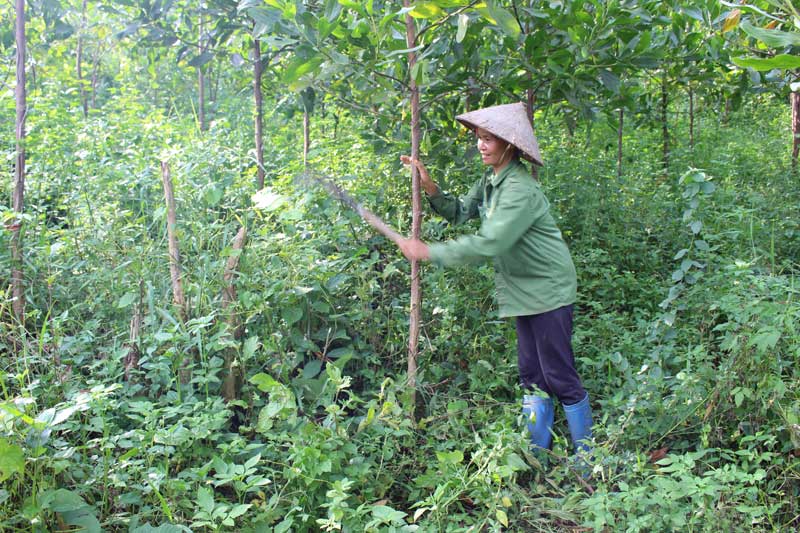



Ms. Bui Thi Phuong's family earned nearly 100
million VND from the model of acacia planting and animal husbandry.
Hung Thi Commune has promoted propaganda,
mobilized the local people to be more active, creative, exploring development
of economic models. In particular, the acacia tree is identified as the main
plantation with a total area of over 300 hectares, 60 hectares of the area
can be harvested. Most of the households maintain to plant on 1-2 hectares,
some households have expanded the area to over 10 hectares. The value of 1
hectare of acacia trees in the cycle of 5 years can be profited from 45 to 60
million VND, depending on the quality.
Besides promoting forestry development, the
households maintain and develop livestock and poultry with over 3,400 animals.
In addition, some new models such as citrus planting, chili planting are
invested to pilot planting by farmers. Since then, some typical households have
earned over 100 million VND per year, such as: the households of Mr. Bui Tien
Trung, Mr. Bui Van Thang C, Mr. Bui Thi Phuong, etc.
We visited Ms. Bui Thi Phuong's family, a
typical household in the economic development of the commune. Currently, Ms.
Phuong's family plants 9 hectares of acacia, 8 hectares of which is in the
business period. In addition, her family invested in wood furniture workshop.
Ms. Phuong said: "In the past, my family economy was mainly based on
agricultural production, that was so hard working but we could not live on.
Since 2011, I borrowed the loan from the bank to expand the area of planting
acacia and developing a variety of industries such as chicken farming,
household furniture processing, etc. Currently, acacia is identified as a main
plant, 1 hectare of acacia with the cycle of 5 years of good varieties can make
the earning of 45- 50 million VND. In 2017, the family earned over 100 million
VND from economic models. "
To help people access to preferential loans,
the commune cooperated with the bank to create conditions for more than 100
households to borrow with total outstanding loans of 4 billion VND. Every year,
departments, unions organize 2-3 training sessions, transferring science and
technology.